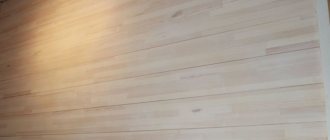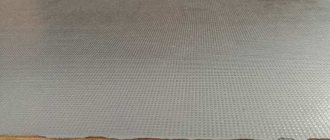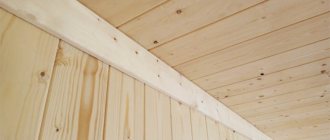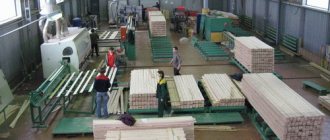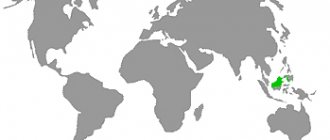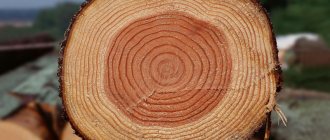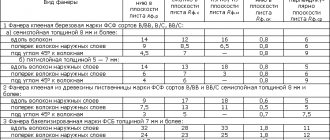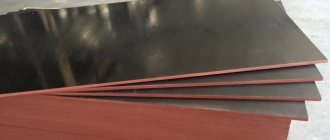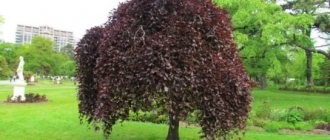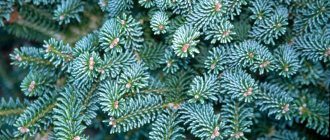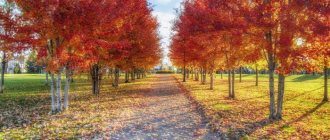To renovate a house, you first need to build it! Turnkey frame houses are one of the most affordable, fastest and high-quality options for housing construction.
When it comes to decorating a house or apartment, many focus on environmentally friendly finishing materials.
The undisputed leader among them is the tree. Calm lining is rightfully considered the best option in terms of price-quality ratio.
The quality of this material has not been in doubt for a long time, and the manufacturing technology of this finishing panel allows us to keep the price within affordable limits.
Interiors that use natural wood look very stylish and elegant.
If you see this finishing board on the Internet, do not think that this is just an advertising photo - the Shtil lining really looks very aesthetically pleasing.
Calm lining: what is it?
To answer the question, what is calm lining, you need to remember what lining actually is. This definition refers to a wooden board equipped with a special lock for secure fixation. The lock is the presence of a groove (small depression) on one side of the board and a ridge on the other side.
Thanks to this structure, the finishing panels are easily laid and reliably connected to each other. At the same time, the lining has several varieties. Among them:
- eurolining;
- calm.
They all differ in the type of lock, which directly affects the performance characteristics.
Short review
What is lining? Initially, these are thin wooden cladding boards of a certain size. They are connected to each other using grooves and tenons. They can be used for finishing the external and internal surfaces of living rooms, baths, saunas, balconies and other premises.
The name is associated with the process of development of railway communication. In passenger cars, the interior lining was made of wooden planks. This made trips more comfortable, because wood, by its natural properties, resists heat and cold, dryness and humidity better than other materials.
Now lining is a thin profiled board, although not always made of wood.
Differences between eurolining and calm
So what is lining calm? This finishing material is well known under other names: “Peasant Woman”, “Collective Farm Woman” and even Russian lining. It differs from the European version in several characteristics.
Profile. The transition from the tenon to the wide surface of the eurolining has sharp corners. Calm, on the contrary, is equipped with smooth transitions and curves. At first this difference seems minimal. However, in practice, absolutely everything matters. Thanks to the rounded corners, the surface with this finish appears softer and smoother. In addition, it is the calm that boasts a more attractive price. This is achieved due to the fact that the rounded surface is easier to process, and there will be almost no cracks or chips. A small percentage of waste in production can significantly reduce the cost of finished products.
Spikes sizes. The peculiarity of the Euro lining is that the size of the tenon is significantly larger than the size of the groove. Because of this feature, when assembling the lamellas, a difference in the thickness of the decorative coating is formed, the so-called “shelf”. This makes the already finished surface look like a fence rather than a smooth base.
In calm, the size of the groove and the size of the tenon are made the same. This allows you to achieve an even coating with the same thickness over the entire finishing area.
Varieties
The material from which the lining is made determines the main types of this facing material:
- wooden;
- plastic;
- MDF (made from fibreboard).
Lining made of plastic
Plastic lining is made from polyvinyl chloride. It is hollow inside, which increases sound insulation and better retains heat in the room.
The advantages of such panels include:
- long service life;
- resistance to dampness, which allows them to be used in bathrooms, washrooms, and laundry rooms;
- not afraid of high and low temperatures;
- does not fade in the sun;
- wide choice of colors and textures;
- no additional processing required before installation;
- affordable prices.
As a disadvantage, low mechanical strength is noted: it does not withstand impacts, scratches, or chips.
MDF products
The lining made from MDF stands on the same level as plastic and wooden panels. This material is considered environmentally friendly because it is made from small wood shavings. The production process involves hot pressing wood waste under high pressure. There is no evaporation of epoxy resin or phenol, which allows the use of such cladding in residential premises.
The advantages of MDF lining include:
- light weight;
- simple installation technology;
- large selection of exterior design options.
Wood paneling
It is difficult to imagine life without wooden products. The construction and decoration of various buildings is also not complete without such material.
Wood lining is produced with different parameters, which is why the names are different. The main difference is the profile shape. Let's look at some of them.
Standard
This is a basic type of lining, which in cross-section has the shape of a trapezoid. Its sides are cut at an angle of thirty degrees. The plane adjacent to the wall has grooves for ventilation, and the edges are made in the form of connecting tenons and grooves. All parts are made taking into account the expansion of wood with increasing environmental humidity. The finished surface looks like a continuous coating with parallel recesses at the joints of individual planks.
Calm
A distinctive feature of this profile is the rounding of the corners of the front parts of the trapezoid visible after assembly. Often this design of planes looks very harmonious in combination with other details of the decor.
Eurolining
A common type of panels, manufactured in accordance with Western European standards. When assembled, it has a wide groove at the joints of individual planks, so the pattern is more prominent. The requirements for the manufacture of lining are quite high. Standards for humidity of workpieces, dimensional accuracy of finished products, and cleanliness of surface treatment are observed.
Each slat at the back has slots along its entire length for ventilation and removal of excess moisture, so that mold and rot do not appear on the wall, sheathing and insulation, and also so that the surface does not warp when temperature and air humidity change.
American
Very well suited for finishing external surfaces. After installing the lining, it seems that these are just horizontal boards overlapping each other. But due to the fact that everything is connected using grooves and tenons, the surface turns out to be almost monolithic, which protects the building well from the influence of atmospheric factors and looks beautiful. These are the main differences between the material.
Dimensions of the lining Shtil
In addition to the structure of the lock, the calm has one more feature - different widths of the lamellas. Depending on the requirements and characteristics of the work, the consumer can choose boards with a width of 90-140 mm. This is very convenient, especially considering that eurolining does not offer such a choice. What does this characteristic affect, and which option should you choose?
Wide lamellas cover a large surface area, which means they increase the speed of finishing work. This option is ideal in cases where deadlines are tight.
- Wide slats. This material is recommended for exterior decoration (walls, balconies).
- Narrow boards. They are ideal for interior walls.
Many buyers are interested in the question of which direction the boards should be placed (vertical or horizontal). There are no strict installation requirements. The only thing to consider:
- vertical stripes visually help to raise the ceiling in the room and expand the space, therefore they are recommended for relatively small rooms;
- The horizontal arrangement of the boards looks great in spacious rooms.
Decorative properties
The material has amazing properties when installed in vertical and horizontal directions. This makes it possible to visually manipulate space. There are possible options:
- light panels directed from bottom to top - visually increase the height of the ceilings;
- a dark panel that is attached across reduces the visible volume of the room.
There are many options for improvisation. With this material you can create the desired appearance of space.
Softwood paneling
To make lining boards, coniferous trees are often used, such as:
- spruce;
- aspen;
- cedar.
This wood differs from hardwood in several ways.
- Resin content. Spruce and pine wood has a high resin content. It is these substances that act as natural antiseptics that prevent the appearance of fungus and mold. Stil pine lining is an ideal solution for cladding the external walls of a house.
- Strength. Pine can boast a particularly high indicator. In addition, parts made from this wood are easy to process. Working with her is a pleasure.
- Low thermal conductivity. Despite this feature, coniferous slats are not recommended for finishing baths and saunas. The fact is that when heated, coniferous wood releases a large amount of resin, which negatively affects human well-being.
One of the most expensive and high-quality options is cedar lining. In addition to high strength, it has healing properties.
Wagon selection
Softwood paneling
The following coniferous trees are often used to create lining boards: cedar, aspen and spruce.
This tree differs from deciduous trees in different properties.
- Resin content – pine and spruce wood has a high resin content, because it is these substances that will act as natural antiseptics that prevent the formation of mold and mildew. Pine wood lining will be the best solution for finishing the outside walls of a house.
- Low thermal conductivity - despite this feature, it is better not to use coniferous slats for finishing saunas and baths. The thing is that when heated, coniferous lining releases a lot of resin, which negatively affects human well-being.
- Strength – pine boasts an extremely high rating, and moreover, elements made from such wood can be easily processed. Working with her is a complete pleasure.
Calm cedar lining is considered one of the highest quality and most expensive options. In addition to its high level of strength, it has healing properties.
Hardwood paneling
Hardwood does not contain resins, and therefore it should be chosen for finishing the walls inside the room.
Moreover, the range here is much larger than among coniferous wood.
- Linden and alder - a feature of these options is their high porosity. The fact is that these boards hardly heat up, and therefore can withstand high temperatures without any problems. This is the best option for a steam room.
- Birch - this type of wood is afraid of high levels of humidity, and therefore this lining is perfect only for dry and well-ventilated rooms.
- Oak - it should be purchased if you need a strong, high-quality and at the same time extremely durable cladding.
- Larch – stands out for its chic pattern. Calm larch lining is highly durable and also resistant to high levels of humidity.
Now let’s classify the lining.
Deciduous wood paneling
Hardwood does not contain resins, so it is worth choosing for indoor wall cladding. At the same time, the assortment here is much larger than in the coniferous category.
- Alder, linden. The peculiarity of these options is their high porosity. Such boards heat up slightly, so they can withstand even very high temperatures without problems. There is simply no better solution for placing a steam room.
- Oak. It is worth choosing if you need a high-quality, strong and durable finish.
- Birch. Wood of this type is afraid of high humidity, so this lining is suitable only for dry and well-ventilated rooms.
- Larch. Calm larch lining is distinguished by its luxurious pattern, high strength and immunity to high humidity.
We invite you to familiarize yourself with our range of materials
Larch lining - Extra grade
Wood Larch Width 96 mm Thickness 14 mm Length 3 m Qty.
in pack 4 things. 1850 rub/m2Larch lining - Prima grade
Wood Larch Width 96 mm Thickness 14 mm Length 3 m Qty.
in pack 4 things. 1500 rub/m2
Cladding classes
When choosing a finishing material, it is worth keeping in mind: all lining differs not only in the type of wood, but also in the grade (quality of the material).
Premium class (extra). Calm lining “extra” made of larch, cedar, aspen and any other wood is the most expensive material compared to other categories. Premium class boards are even, smooth, free from chips, cracks and other flaws. This finish is simply ideal for expensive interiors.
And class. It is worth recognizing that at a more affordable price, boards of this type can be no worse than “extra”. When purchasing, you need to pay attention to the external characteristics of the products. The core can be present only on 20% of the area of the boards; non-through cracks of several mm are allowed. There should be no black or fallen knots at all.
Class B (or grade 2). Such boards have visual defects. These are black knots and resin pockets. The presence of slight rot and blue staining is acceptable (up to 10% of the total area). There can be no more than 3 dents, cracks and small chips per linear meter.
Class C. This finishing material is much cheaper than others, but its quality can be quite poor. Some manufacturers, under the guise of C class lining, sell ordinary manufacturing defects. There are a lot of chips, through cracks, dark cores and fallen knots here.
Having figured out what this lining is, many will probably agree that such a finishing material is simply ideal for cladding the internal and external surfaces of walls. It is attractive in appearance, completely natural and durable. However, to achieve excellent results, you should approach your choice as seriously as possible.
Advantages
Taking into account the characteristics, we can come to the conclusion about the advantages of the “calm” lining, which boil down to the following:
- Wide area of use due to the smoothness of the surface;
- A significant range of sizes, allowing the panels to be used for covering the entire room and small individual areas;
- Possibility to reduce the number of joints by using elongated and wider boards;
- Ease and speed of assembly due to the low weight of the material and the universal tongue-and-groove fastening device;
- The choice of shades and painting are not necessary; natural wood has a good texture;
- Finished structures are durable and well resistant to deformation processes;
- Reliability of fixation, separation of elements during operation is not allowed;
- The installed cladding is able to maintain its original condition for a long time without the panels diverging and the formation of cracks;
- The profile design ensures condensate drainage, so the material does not rot;
- There is no need for additional leveling and priming of surfaces before installing the lining;
- The same application for both vertical and horizontal surfaces, use for cladding the interior and exterior of premises.
The disadvantage is the cost, which is by no means low, like other natural high-quality finishing materials. However, taking into account the performance qualities of the “calm” lining, the high price is justified.
